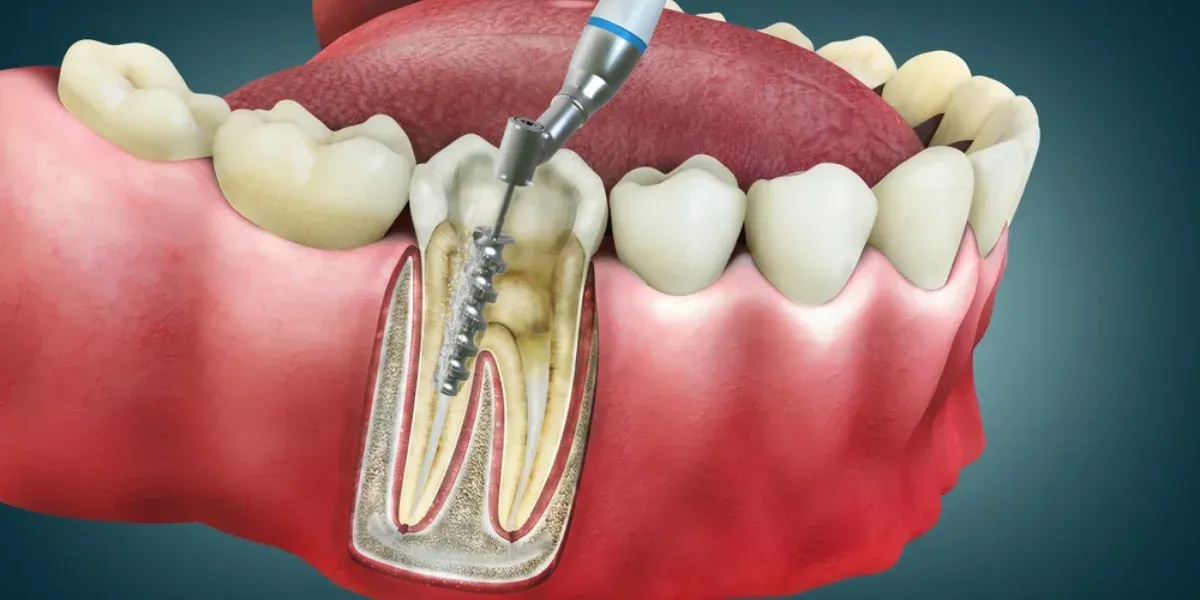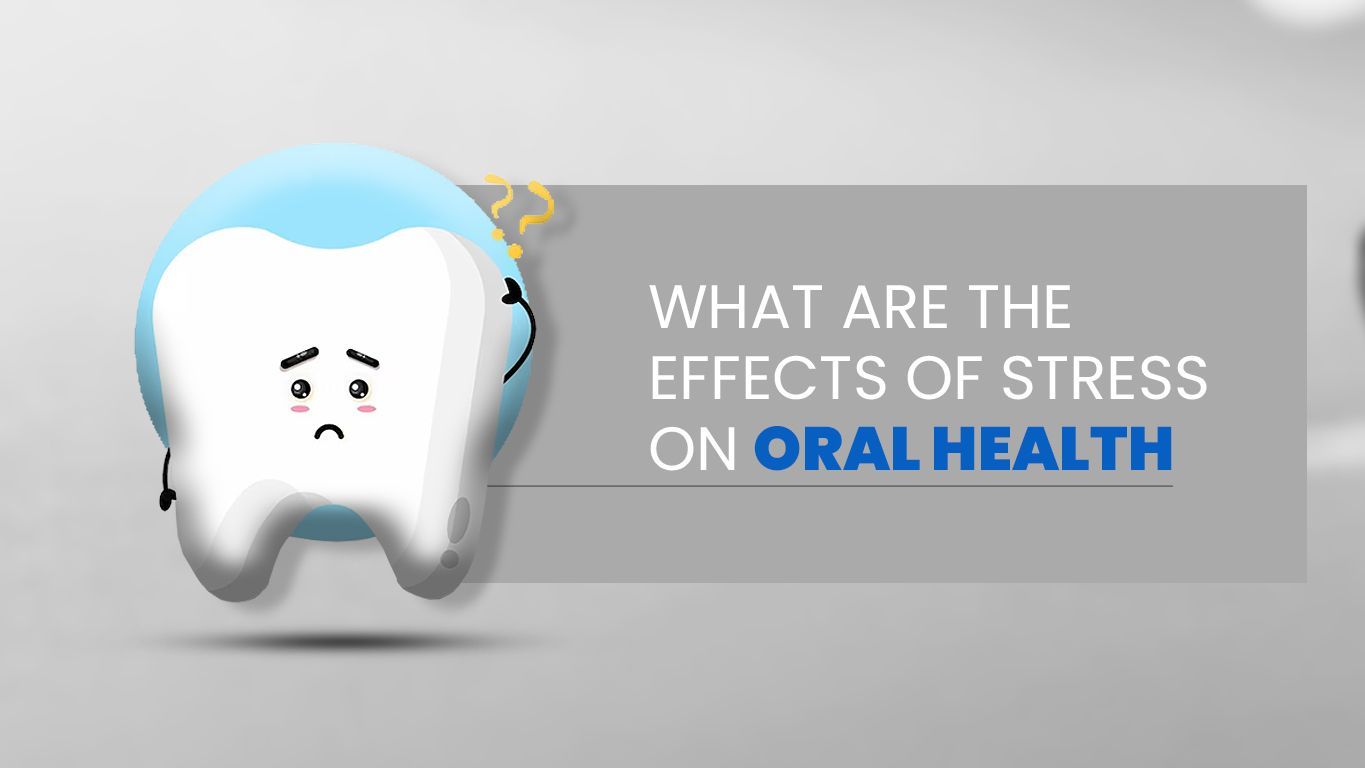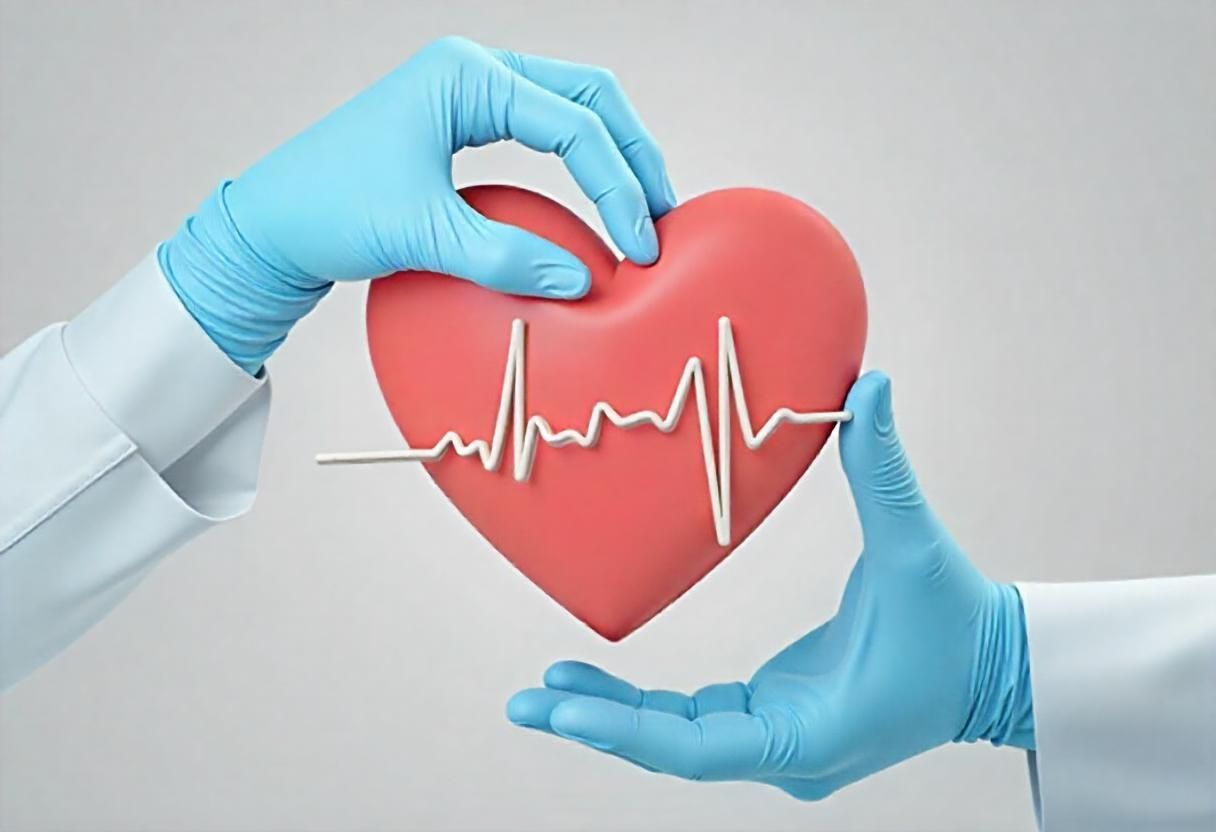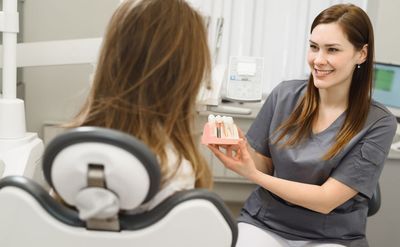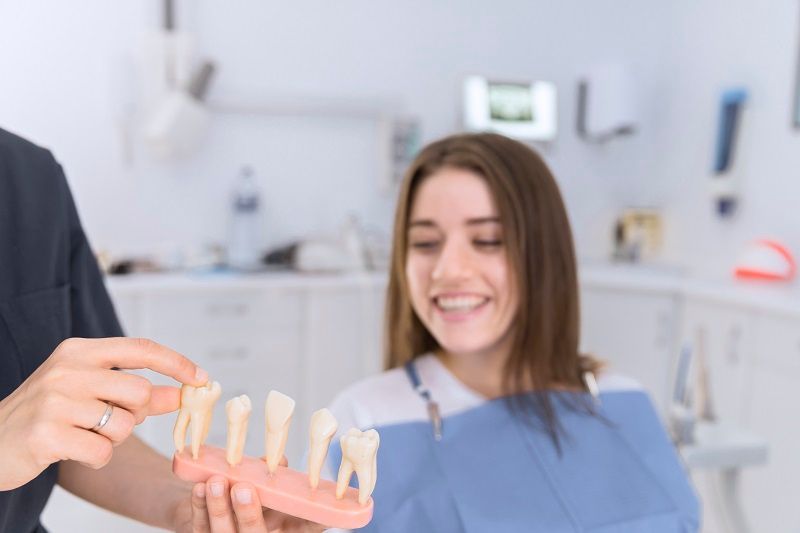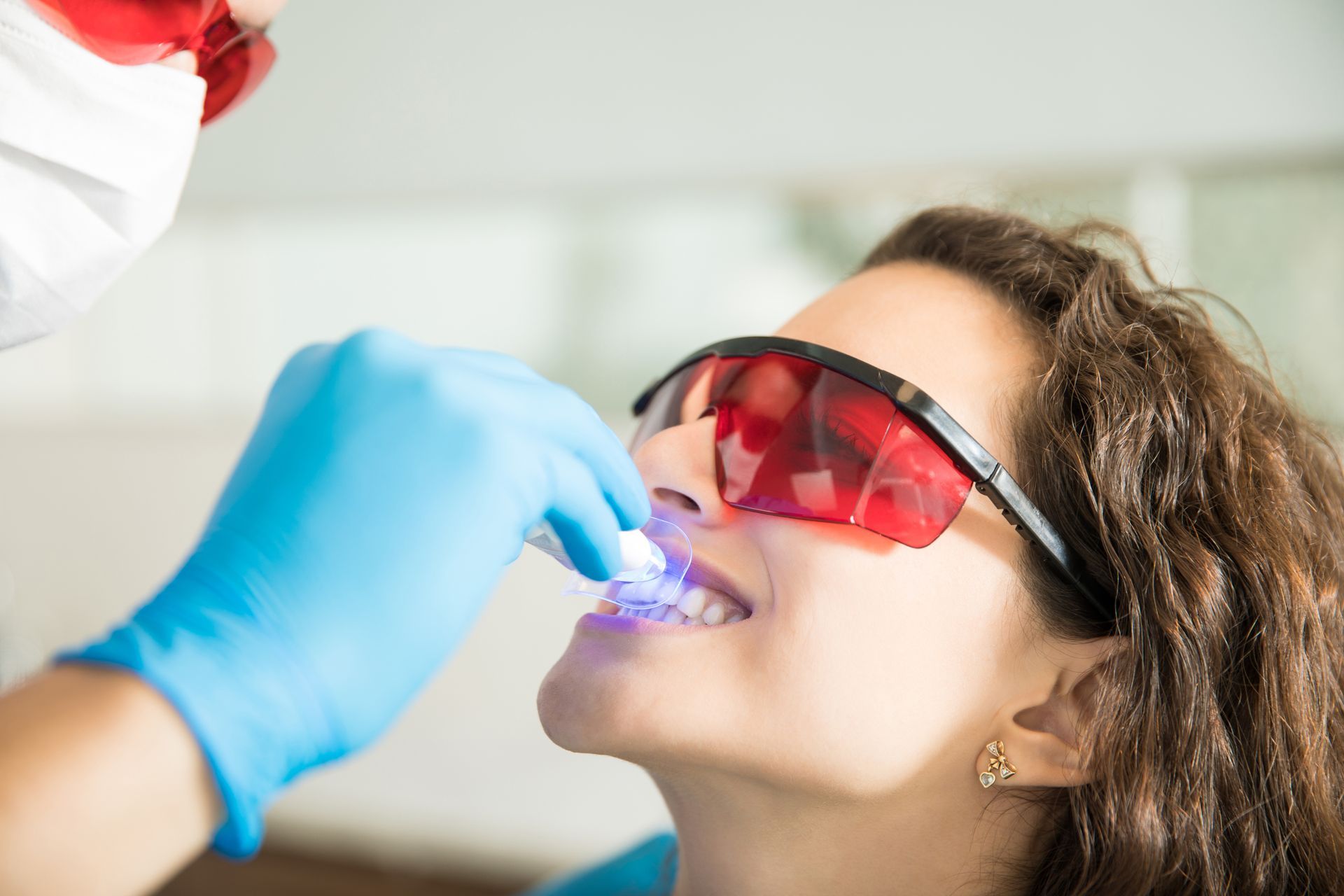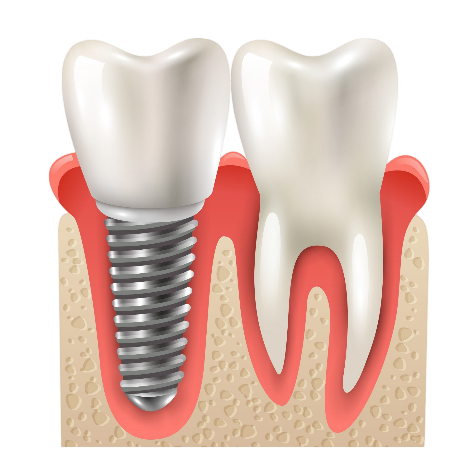How Can Soft Tissue Laser Dentistry Help You?
Soft Tissue Laser Dentistry
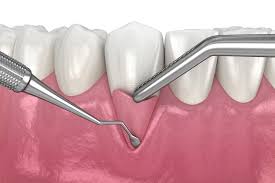
If you are anything like me, the thought of going to the dentist gives you anxiety. Soft tissue laser dentistry – which is more gentle than traditional surgery and relatively pain-free – may just be what we have wished for.
Soft tissue laser dentistry is a pain-free dental procedure that can help with a variety of dental issues.
- Cavities
- Gingivitis
- Oral Surgery
- Cleaning and Whitening
Less pain? Going to the dentist just became more appealing. Let's learn more about soft tissue laser dentistry.
Soft Tissue Laser Dentistry
Soft tissue laser dentistry has been in use since 1989. We're all fairly familiar with the use of lasers in medical treatments and surgeries. For its use in dentistry, the National Journal of Maxillofacial Surgery says lasers have proven "to be an effective tool to increase efficiency, specificity, ease, and cost and comfort of the dental treatment."
- Less risk and pain. There is a risk when anesthetics or anesthesia are administered. These shots of pain-numbing drugs hurt initially.
- Reduced need for anesthetics and anesthesia. Sometimes the dentist misjudges how much Novocain is too much for you. If this happens, not only are you numb for hours on end, but you feel queasy too.
- Increased precision and decreased recovery time. Using lasers gives the dentist more control and precision. The use of lasers is virtually pain-free and leaves the patient with less recovery.
- No more drills and scalpels. Lasers are less invasive, less noisy, less painful – and these characteristics can add up to less anxiety for patients.
Laser Use for Dental Cleaning
The use of soft tissue lasers for cleaning teeth is becoming more popular. The laser can efficiently and effectively rid the teeth of plaque and other foreign materials.
Cleaning the teeth in this fashion also kills bacteria and germs residing on the teeth and at the gum line. Cavities can be detected early using lasers by revealing even small amounts of tooth decay.
Lasers for Healing Tooth Sensitivity
Dental laser treatments also treat tooth sensitivity by sealing tubules, small canals, at the tooth root. These tubes are often exposed due to enamel loss.
This sensitivity to hot and cold can affect how a person consumes food and drink. It can also affect the person's brushing habits as their teeth may be sensitive to the toothpaste or water. Sensitivity issues can become a vicious cycle if not dealt with due to cavities developing from lack of brushing.
Lasers for Whiter Teeth
Lasers are also being used to whiten teeth. With this process, the dentist will make a mold of your teeth. A 30% solution of hydrogen peroxide will be applied to your teeth, and a bright blue light will be used to activate the hydrogen peroxide solution. You will need to wear special goggles while the light is on.
You may experience some tingling or sensitivity during the procedure. According to Birdie, this is due to the bleaching agent seeping deep into the teeth. It is usually not very painful, though your teeth will be sensitive to hot and cold for about a week after whitening.
You will not want to eat or drink anything that could stain your teeth for up to a week.
- Coffee
- Tea
- Berries
- Dark juices
Not everyone sees results. Some people just have darker teeth than others. However, most people experience better results from an in-office laser whitening than from an at-home whitening kit.
Laser Dentistry for Cavities
Having a cavity drilled with an electric drill is traumatic for adults and children. The sound and smell are enough to make people suffer from pain. Luckily, it no longer has to be a frightening experience.
Can you imagine not needing Novocain while having your cavity drilled and filled? With laser dentistry, there is no drill. The pen-like laser precisely clears away the decay of the tooth. This leaves more of the healthy tooth intact.
A water-based laser helps keep the tooth hydrated while having the procedure. This hydration helps reduce any pain during the cleaning of the cavity.
Children and adults find having a cavity filled using laser dentistry less intrusive than using the traditional drill. There is no noise or vibration, no needles, and your mouth will not be numb from Novocain injections.
Crown Lengthening With Oral Lasers
"Gingivectomy may be the appropriate code to use for the 'soft-tissue crown-lengthening' procedure, as it is strictly a soft-tissue procedure," says Inside Dentistry. The diode laser is used to cut back the gum and expose the tooth underneath.
When someone has a severe cavity or a broken tooth that is below the gum line, the dentist or orthodontist needs to get below the surface of the gum and rebuild the bone and tooth. This is why the dentist may need to perform a crown lengthening.
Again, the use of the laser is less invasive in this procedure. It precisely removes the soft tissue around the affected tooth or teeth.
Using the laser is less painful than a scalpel, and there is little to no blood during the session. Once the tissue has been removed from the base of the tooth, it can be rebuilt.
Lasers Used to Fight and Cure Gingivitis
Gingivitis is the dreaded gum disease, so many people have. It is caused by bad bacteria below the gum line. The symptoms of periodontal disease are difficult to ignore.
- Halitosis (bad breath)
- Red swollen gums
- Bleeding gums
- Bone loss of the jaw
- Tooth sensitivity
- Painful chewing
- Tooth loss.
Traditional treatment for periodontal disease was very invasive and painful. Typically, it resulted in having all of the teeth removed and eventually being fitted for dentures.
With soft tissue lasers, the procedure is not as invasive. There is less pain and swelling. The lasers target and kill the bacteria that are causing bone loss and tooth decay. It often helps save any healthy teeth you still have.
Laser Dentistry for Tooth Extractions
Whether it is a cavity that is beyond filling or wisdom tooth removal, lasers are used to help with tooth extractions.
Lasers cannot remove teeth yet, but they can help in the process. A laser can be used to cut through soft gum tissue.
While doing so, the laser immediately cauterizes the wound. To cauterize means to burn the skin around the wound to stop or prevent bleeding. This eliminates swelling and infection associated with open wounds in the mouth.
Dental lasers are also beginning to be used to help remove tooth roots very accurately. This causes less trauma to the surrounding bone and tissue.
Soft Tissue Lasers Used to Remove Ulcers
If you've ever had a canker sore, you know how uncomfortably painful they can be. Canker sores are a type of ulcer called an aphthous ulcer. For some individuals, they are an ongoing problem and make eating and drinking painful and difficult.
Using low light laser therapy, those with aphthous ulcers can be removed easily and without much pain.
Patients have typically required two treatments with laser therapy. Subsequent visits revealed the cancers had healed, and ulcers had not returned.
There are four types of lasers used in aphthous ulcer treatment.
- CO2 = Carbon Dioxide
- Nd: YAG= (Nd) Neodymium-Doped (YAG) yttrium aluminum garnet crystals
- Diode= Semi-conductor diode
- GaAIA= Aluminum gallium arsenide
Each of these is named for the chemical agent it uses. These low-level laser treatments lessen the patient's pain and speed recovery of the wounds.
Soft Tissue Laser Has Advanced Dentistry
Antique dental instruments made me shudder when I saw them in museums. More modern techniques have been just as invasive and painful. However, power drills made the process quicker, while x rays helped detect cavities and other problems more easily.
Today, dentistry does not have to be torturous. Thanks to modern technology and the invention of the soft tissue laser, dentistry can be nearly pain-free. Works Cited Healthline Are Laser Dental Procedures Better than Traditional Treatments?

